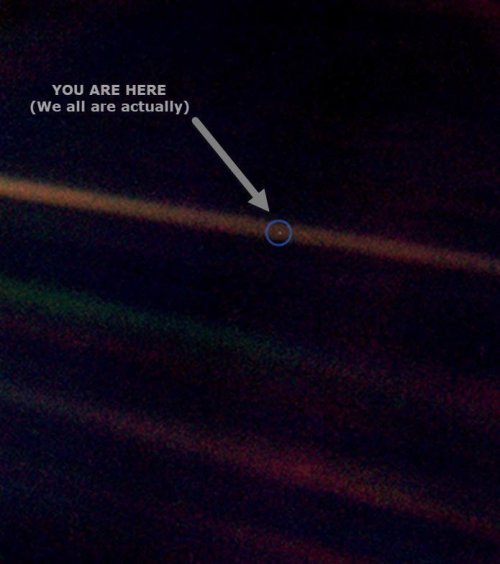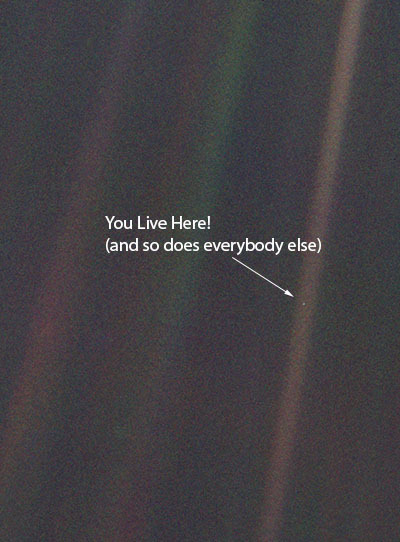Do You Ever Think About The Infinite


Do you ever think about the infinite
More Posts from Ad-astra-affecte-spe and Others



M78, Within Orion





Star Trails in Western Australia by Trevor Dobson

What did Hubble see on your birthday? (x)
Dec. 3, 2009 - Stellar Jewel Box NGC 3603

Nu Scorpii
One of the most interesting areas of the night sky, Scorpius holds a myriad of nebula and beautifully contrasting coloured stars.
Moving towards the tail, you'll find Nu Scorpii a binary star system 7 stars.

If that alone isn't enough to get your mind wondering how all these stars are orbiting each other, the star system itself is the eye of a horses head ! Albeit a nebulous head.

IC 4592 is a reflective nebula, with the blue light reflected from fine dust, that blue light is coming from the Nu Scorpii system above.
Pull out and you'll see the whole region contains many star forming areas with reflective features.


shit man this got me emotional
HOW DO ASTRONOMERS DETECT EXOPLANETS AND DETERMINE IF THEY COULD SUPPORT LIFE??
Blog#335
Wednesday, September 27th, 2023
Welcome back,
On March 21, NASA announced the confirmation of the 5,000th planet outside our Solar System. From scorching-hot gas giants nestled near their parent star to rocky worlds that may host water on their surface, there’s a variety for scientists to study.
But finding these strange new worlds is a science in itself.

We’ve only been able to definitively detect planets of any kind for a few decades, and even at that, there are challenges in detecting such a small object at that distance in even the most powerful telescopes.
Inverse spoke with Marie-Eve Naud, an exoplanet researcher and outreach coordinator for the University of Montreal’s Institute for Research on Exoplanets, to tell us more about how astronomers find these worlds and the considerations for each method.

While there are numerous methods, the ones cited below are the most common.
THE TRANSIT METHOD
Astronomers have discovered most exoplanets using the transit method, notably with NASA's Kepler telescope launched in 2009. This method observes planets as they pass in front of their stars, causing a slight dimming of starlight, which photometers can detect. This approach works best in space due to minimal atmospheric interference, favored by missions like ESA's Cheops and NASA's TESS.

To confirm exoplanets, multiple transits are necessary to rule out sunspots or dust as causes of light fluctuations. Typically, two or three transits are required to gather substantial data.
Once a planet is detected, astronomers can estimate its radius, while mass is often determined through the radial velocity method. The combination of mass and radius helps classify a planet as rocky or gaseous, impacting its potential habitability.

Factors like proximity to an active star and radiation levels also affect habitability assessments, as seen with TRAPPIST-1's uncertain habitability despite hosting seven Earth-sized planets in its habitable zone.
RADIAL-VELOCITY METHOD
The radial velocity method is commonly used to discover planets, particularly with instruments like HARPS at the European Southern Observatory’s La Silla 3.6m telescope in Chile.

Planets and stars both orbit around their center of mass. A star with a planet exhibits a slight motion. Multiple planets can lead to complex motions.
This method involves analyzing the star's spectrum. When the star approaches, its light shifts towards red due to compression. When it moves away, the light shifts towards blue.

The planet's motion slightly affects the star's spectrum, creating a "barcode" of the star.
The first detection of a planet around a Sun-like star using this method was in 1995 when Didier Queloz and Michel Mayor found 51 Pegasi b. Prior to that, in 1992, planets were detected around pulsar PSR B1257+12, using changes in the pulsar's radio signal. This showcases the diverse scientific approaches to discovering distant worlds.
Originally published on www.inverse.com
COMING UP!!
(Saturday, September 30th, 2023)
"WHAT IS THE BLOCK THEORY??"






cancel your plans we’re thinking about the pale blue dot voyager pic tonight

Laika: 1954-1957
Opportunity Rover: 2004-2019

2023 February 25
Crescent Moon Occultation Image Credit & Copyright: Fefo Bouvier
Explanation: On February 22, a young Moon shared the western sky at sunset with bright planets Venus and Jupiter along the ecliptic plane. The beautiful celestial conjunction was visible around planet Earth. But from some locations Jupiter hid for a while, occulted by the crescent lunar disk. The Solar System’s ruling gas giant was captured here just before it disappeared behind the the Moon’s dark edge, seen over the RÃo de la Plata at Colonia del Sacramento, Uruguay. In the serene river and skyscape Venus is not so shy, shining brightly closer to the horizon through the fading twilight. Next week Venus and Jupiter will appear even closer in your evening sky.
∞ Source: apod.nasa.gov/apod/ap230225.html

Orbital path of asteroid near miss in 2002. Yah, that’s how close we came to nuclear winter and possible total destruction.
-
 xenohiraethposts reblogged this · 1 month ago
xenohiraethposts reblogged this · 1 month ago -
 sundayday reblogged this · 1 month ago
sundayday reblogged this · 1 month ago -
 ngs991-2 liked this · 3 months ago
ngs991-2 liked this · 3 months ago -
 thelustybraavosimaid reblogged this · 3 months ago
thelustybraavosimaid reblogged this · 3 months ago -
 etceterodactyl reblogged this · 5 months ago
etceterodactyl reblogged this · 5 months ago -
 slubbycottonrocks liked this · 8 months ago
slubbycottonrocks liked this · 8 months ago -
 gawwain reblogged this · 8 months ago
gawwain reblogged this · 8 months ago -
 acatin reblogged this · 9 months ago
acatin reblogged this · 9 months ago -
 acatin liked this · 9 months ago
acatin liked this · 9 months ago -
 merlinoleum reblogged this · 9 months ago
merlinoleum reblogged this · 9 months ago -
 spaceshiveringstardust liked this · 10 months ago
spaceshiveringstardust liked this · 10 months ago -
 fullmetallgurren reblogged this · 10 months ago
fullmetallgurren reblogged this · 10 months ago -
 anhedoniacity liked this · 10 months ago
anhedoniacity liked this · 10 months ago -
 esoomris reblogged this · 10 months ago
esoomris reblogged this · 10 months ago -
 nach0-reblogs reblogged this · 10 months ago
nach0-reblogs reblogged this · 10 months ago -
 nach0 liked this · 10 months ago
nach0 liked this · 10 months ago -
 4thchildren liked this · 10 months ago
4thchildren liked this · 10 months ago -
 wizardandgalaxy reblogged this · 10 months ago
wizardandgalaxy reblogged this · 10 months ago -
 wizardandgalaxy liked this · 10 months ago
wizardandgalaxy liked this · 10 months ago -
 biracy liked this · 10 months ago
biracy liked this · 10 months ago -
 ablackcatayellowdog reblogged this · 10 months ago
ablackcatayellowdog reblogged this · 10 months ago -
 ablackcatayellowdog liked this · 10 months ago
ablackcatayellowdog liked this · 10 months ago -
 gerardwaygirlmoments reblogged this · 10 months ago
gerardwaygirlmoments reblogged this · 10 months ago -
 gerardwaygirlmoments liked this · 10 months ago
gerardwaygirlmoments liked this · 10 months ago -
 bitchwitchvibes reblogged this · 10 months ago
bitchwitchvibes reblogged this · 10 months ago -
 giaffa liked this · 10 months ago
giaffa liked this · 10 months ago -
 the-silvered-pirate reblogged this · 10 months ago
the-silvered-pirate reblogged this · 10 months ago -
 ineffablecrowpunk reblogged this · 10 months ago
ineffablecrowpunk reblogged this · 10 months ago -
 cosmic-quark reblogged this · 10 months ago
cosmic-quark reblogged this · 10 months ago -
 cosmic-quark liked this · 10 months ago
cosmic-quark liked this · 10 months ago -
 the-god-of-bad-ideas liked this · 11 months ago
the-god-of-bad-ideas liked this · 11 months ago -
 insaneandlovingit reblogged this · 11 months ago
insaneandlovingit reblogged this · 11 months ago -
 christ-with-a-why reblogged this · 11 months ago
christ-with-a-why reblogged this · 11 months ago -
 vannpratt-blog liked this · 11 months ago
vannpratt-blog liked this · 11 months ago -
 whats-the-bi-fi-password liked this · 11 months ago
whats-the-bi-fi-password liked this · 11 months ago -
 metal-queer-solid-5 reblogged this · 11 months ago
metal-queer-solid-5 reblogged this · 11 months ago -
 avednay-blog liked this · 11 months ago
avednay-blog liked this · 11 months ago -
 cranky-pants liked this · 11 months ago
cranky-pants liked this · 11 months ago -
 angelofmercury reblogged this · 11 months ago
angelofmercury reblogged this · 11 months ago -
 angelofmercury liked this · 11 months ago
angelofmercury liked this · 11 months ago -
 yami-no-kokoro liked this · 11 months ago
yami-no-kokoro liked this · 11 months ago -
 marks6cherry liked this · 11 months ago
marks6cherry liked this · 11 months ago -
 feuerkindjana liked this · 11 months ago
feuerkindjana liked this · 11 months ago -
 itcouldalwayshappen reblogged this · 11 months ago
itcouldalwayshappen reblogged this · 11 months ago -
 yelenasvestpockets liked this · 11 months ago
yelenasvestpockets liked this · 11 months ago -
 yea-verity reblogged this · 11 months ago
yea-verity reblogged this · 11 months ago -
 no-paperwork liked this · 11 months ago
no-paperwork liked this · 11 months ago -
 madgirlsloveblog reblogged this · 11 months ago
madgirlsloveblog reblogged this · 11 months ago -
 catsteinbooks liked this · 11 months ago
catsteinbooks liked this · 11 months ago -
 invadernids liked this · 11 months ago
invadernids liked this · 11 months ago

★•Astronomy, Physics, and Aerospace•★ Original and Reblogged Content curated by a NASA Solar System Ambassador
204 posts